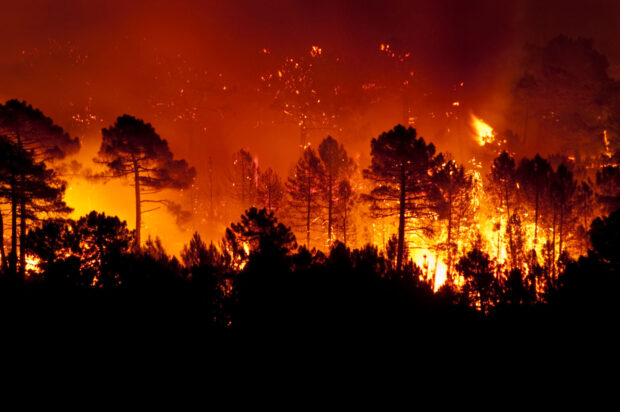Climate change is contributing to increasingly intense natural catastrophes that leave larger and larger losses in their wake. What steps can the insurance industry take to prevent losses, protect clients and ultimately create a safer world in the eye of a growing storm?
AM Best’s webinar “Working Together to Mitigate Nat Cat Risk in Challenging Climate Times,” sponsored by Munich Re, asked a panel of experts to speculate about the future of natural catastrophe preparation and recovery in the face of increased impacts from climate change. The goal: save lives and lower losses.
Exposure and Preparation
“There’s a common thread when we talk about the exposure to property and lives, and that’s really our preparation for it,” said panelist Maurice Marvi, property loss control expert at Munich Re Specialty Insurance. “We have building codes in place, and in some places, they have been shown to work very well, but they only work as well as they are enforced.”
While the science and engineering are available to create more resilient structures, people have been reluctant to embrace the changes even when the threats are apparent and ongoing, said panelist Anne Cope, chief engineer at Insurance Institute for Business & Home Safety. “We need to evaluate where we are building, what we should expect, and have the awareness of the vulnerability.”
Unfortunately, some of the more vulnerable places for buildings, such as beaches and barrier islands, are the most desirable places to live, Marvi said. As the last few hurricane seasons have shown, properties built in Florida after its 2002 building code revisions show a greater ability to stand up to catastrophes—for now.
“You’re going to have to build to withstand the hazards that can be expected, not just the hazards that we expect today,” Marvi said. “We’re going to have to take a look into the future and say, ‘What we’re building today, is that going to meet the hazards that we are going to see down the road?'”
But not all locations can be adequately defended against natural hazards. Some loss can be managed with measures such as flood walls or hurricane protective windows or building at higher elevations, Marvi said, “but probably the best way is not to build in these areas in the first place.”
Technology
From networked sensors in homes and businesses to more precise mapping, technology will play a critical role in helping to build stronger and smarter buildings, the panelists said.
By collecting data from everything from freezing pipes to flood plains to fire hazard conditions, insurers can predict the scope and frequency of claims. More data means more accurate estimates of coverage needs and attainable measures to prevent losses.
“When I first started in loss control, natural catastrophe was something we reacted to,” Marvi said. “Generally, the loss control engineers and representatives were brought in to assist with claims or something like that, taking our technical knowledge and taking a look at things after the fact.”
Mapping vulnerable areas for more accurate risk assessment is one field in which technology has vastly improved over the last few decades.
“The flood maps were very rudimentary. I remember having an entire room of paper flood maps so I could take a look at the flood. And sometimes they were very old.” He added that resources such as wind maps and earthquake maps represented the entire U.S. on a single 8-by-11-inch sheet of paper. “You couldn’t tell anything, then.
“Loss control now has access to maps down to 10-meter resolution as to what your actual exposure is,” Marvi said. “So, we get a lot more information that tells us where to start when it comes to taking a look at hazards, taking a look at the built environment, seeing what kind of mitigation can be done in order to reduce any type of aftermath in any type of natural catastrophe.”
The trend of catastrophic events increasing in both frequency and intensity is forcing carriers to look for ways to mitigate losses through technology.
Effective deployment of sensors, for example, can yield valuable information about power grids, building systems and other components.
“We’re attacking the challenge of climate change, going into our engineering legacy, through engineering and technology,” said John B. Riggs, chief technology officer and senior vice president of Applied Technology Solutions, HSB. Those measures include resilience management plans, response plans for equipment, and driving sensor deployment and power monitoring.
The company is using loss history and active sensor data to develop more effective ways to minimize and prevent loss, Riggs said. For example, he said that freeze sensors can alert building owners of rapid temperature drops during the front edge of a freeze event. The sensors can signal that it’s time to take steps to prevent property damage before the full force of the event impacts the structure.
“Just that slightest bit of an advantage can make all the difference,” Riggs said.
IoT Sensor technology will continue to evolve and improve, he said. “I think the more important question is that of adoption… I think we’re right at the tipping point of early adopters and early majority.
“In terms of the future and the insurance industry, IoT sensors and related tech, we’re exploring the frontier—the new areas of predicting and preventing loss,” Riggs said. “The true value of that confluence between technology and insurance has yet to be realized.”
Wildfire
Wildfires present unique challenges when it comes to loss prevention, said Cope.
One challenge is that fires often spread by casting embers that can travel for miles before igniting a spot fire.
“I can mitigate against the wind,…strengthen the building from the inside and bake the stuff into it,” said Cope, who is a wind engineer. “Wildfires are interesting because many of the things that cause wildfire to create havoc in the built environment are those embers that go for miles.”
Property owners in fire-prone areas should follow recommended guidelines to prevent spot fires from spreading, such as fire-proof landscaping around structures, the panelist advised.
“Wildfire defense needs to be a systems-based approach,” Pope said. “Every link in the chain has to be strong enough. Embers are going to find the weak link and try to get in the landscaping, roof, vents—you have to have a full system.”
Another challenge is that in a built environment, man-made structures in the fire’s path change the fire’s nature. The very things it destroys make it harder to fight, she said.
“Wildfire absolutely changes and evolves and becomes more dangerous when it consumes the built environment, which makes it harder to model,” Cope said.
Catastrophes
People often shy away from conversations about disaster damages, past and future, out of concerns for property values or salability. But the priority should be preserving properties, lives and communities, said Cope.
“Let’s be upfront about the wildfire risk or the hurricane risk or the flood risk,” Cope said. “Let’s declare what we already know…Mother Nature is doing, and then let’s embrace the adaptation that is going to be needed.
“We should adapt our built environment to deal with the threats at hand according to the acceptable level of risk,” she added.
“Those repeatable things that Mother Nature is doing need to be part of our resilient communities, and that takes all the stakeholders, the diverse group—builders, insurers, policymakers, homeowners, business owners. Everyone has to come together to think about, ‘What piece do I have in this pie? How am I going to contribute?’ Because I need a thriving community to be there after Mother Nature comes by.”





















 Rebuilding Negotiation Talent: Why This Skill Is Missing and How to Fix It
Rebuilding Negotiation Talent: Why This Skill Is Missing and How to Fix It  How Carriers Are Pairing AI and Process Discipline to Drive Subrogation Outcomes
How Carriers Are Pairing AI and Process Discipline to Drive Subrogation Outcomes  AI in Property/Casualty Insurance: Why Trusted Data Is the Missing Link
AI in Property/Casualty Insurance: Why Trusted Data Is the Missing Link  The Future of Knowledge in Insurance: From Training to AI-Powered Productivity
The Future of Knowledge in Insurance: From Training to AI-Powered Productivity 



